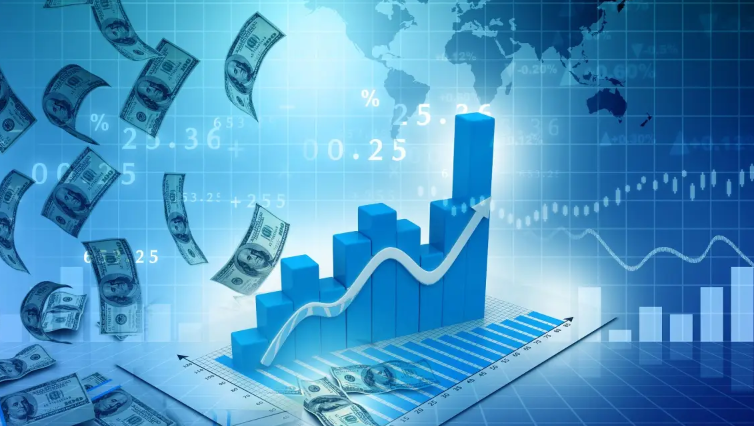U.S. Interest Rates May Stay Steady!
Advertisements
On a notable Thursday, several senior officials from the Federal Reserve took to the stage to articulate their views on the economic landscape, primarily focusing on the future of interest rates in the United States. Their shared message was clear: the Federal Reserve is likely to maintain the current interest rate levels for an extended period, and further reductions will only be considered if inflation shows substantial signs of easing.
At an event in Boston, Susan Collins, the president of the Boston Federal Reserve, shed light on the current economic uncertainties faced by officials. She iterated the necessity to slow down the pace of interest rate adjustments, acknowledging that the Fed is operating under a considerable degree of uncertainty about the economic outlook. This cautious sentiment was echoed by other regional Fed officials, as well as Governor Michelle Bowman, who agreed that a prudently measured approach to rate changes is warranted.
Collins took this opportunity to expound on the Fed's policy stance, asserting that they are well-prepared to make necessary adjustments in response to changing economic conditions. She emphasized that if there is no further positive progress on inflation, the Federal Reserve would keep interest rates steady for a longer timeframe.
In terms of specifics, Collins referenced a preferred inflation measure that rose by 2.4% over the past year, specifically until November of last year. When excluding volatile food and energy prices, the inflation rate surged even higher, reaching 2.8%—both of which surpass the Fed’s target inflation rate of 2%. Although Collins characterized the current economic conditions as “fairly adequate,” she cautioned that the progress made toward reducing inflation could be slower than previously anticipated.
The looming shift in the government, along with a Republican-controlled Congress, poses further complexities, with potential new economic policies that might alter economic trajectories. However, predicting these impacts accurately at this juncture is considered premature.
In a parallel sentiment, Bowman stressed the enduring risks associated with inflation as justification for a gradual approach to rate alterations. Despite her vote in favor of the rate cut in the previous month, Bowman articulated that she could have equally supported a decision to hold lending costs steady. This nuanced perspective underpins the deliberative nature of the Federal Reserve's decision-making process.
Jeff Schmieding, the president of the Kansas City Federal Reserve, reflected a similar outlook, remarking that current interest rates might be near a neutral level—one that does not spur economic growth nor tamp it down. It is worth noting that both Schmied and Collins hold voting rights within this year's Federal Open Market Committee (FOMC).
Collins, when speaking with Bloomberg News, further revealed her inclination to foresee fewer rate cuts than previously expected throughout the year. Her projections appeared to align closely with the median forecasts released following the Fed’s December meeting, which indicated two rate cuts later in the year, each by 25 basis points.

Similarly, Patrick Harker, president of the Philadelphia Federal Reserve, articulated a readiness to support cuts extending into 2025, though he clarified that the timing would heavily depend on economic developments. Harker reiterated his belief that the Fed is on a trajectory of decreasing policy rates. However, he emphasized that his pace of progress would be contingent upon incoming economic data.
Reflecting on the actions taken last December, Fed officials decisively implemented a third consecutive interest rate cut, reducing the benchmark rate by 25 basis points. This last move brought the total rate cuts for the past year to a full percentage point, providing a certain level of stimulus to the economy at that time. Yet, with evolving economic conditions, many Fed officials have voiced concerns, noting that the inflation rate continues to exceed the 2% target, maintaining upward tension on prices. Additionally, a robust labor market, evidenced by favorable employment statistics and a low unemployment rate, plays a crucial role in shaping their monetary policy decisions. Underlying all these factors is a careful balancing act they must navigate—promoting economic growth while simultaneously constraining inflation and ensuring employment stability.
A look into investor sentiment reveals market expectations currently pricing in that decision-makers will opt to keep interest rates unchanged during their upcoming meeting scheduled for January 28-29 in Washington. This anticipation reflects a broader consensus among investors that the Fed, while cautious, aims to maintain economic stability without jeopardizing recovery.
In her Thursday address, Collins also highlighted that her support for the December rate cut was on the condition of maintaining balance within the labor market while upholding an overall restrictive policy stance, which is deemed essential for achieving price stability. Indeed, conversations on monetary policy bring pivotal questions to the forefront of economic discourse, as the Federal Reserve navigates the crosscurrents of inflation, growth, and employment.